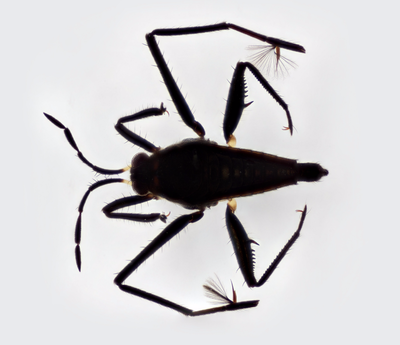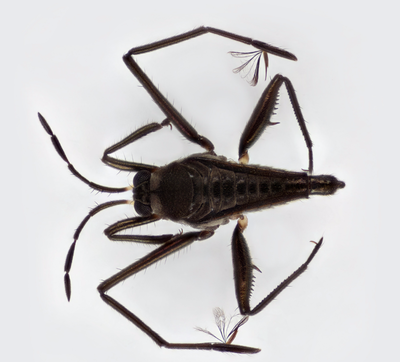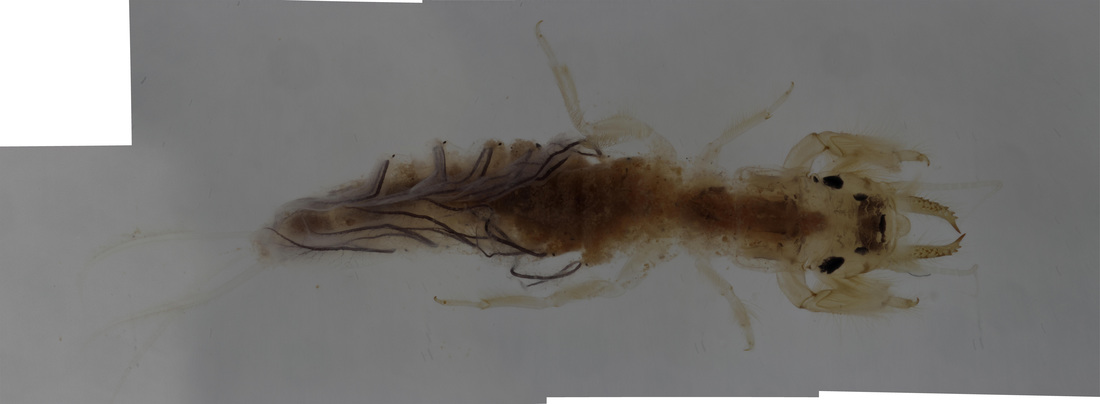|
By Andrea Kautz
Here is a great example of how much of a difference imaging in fluid vs. imaging a dry specimen can make. Here, I tried imaging a small water strider, family Veliid first wet and then dry. I wasn't sure how the feathery swimming plumes would respond to drying out so I imaged it wet first in case they broke. It turns out that imaging dry is much better for revealing detail and texture relief, especially for a specimen with a dark body, By Andrea Kautz I've learned a lot about macrophotography since starting on the macroinvertebrates.org project in December. Using the GIGAmacro machine is certainly many steps up from a standard microscope automontage set-up that I was used to. Thanks to some coaching by Gene Cooper at GIGAmacro and some equipment upgrades, we have finally got the process optimized for our needs and much more streamlined. We received a higher-quality lens with a new diffuser in June that has produced sharper images. One of the more challenging and important parts of our project is capturing ultra-high resolution, focus-stacked images ("GigaMacro" or "GigaPan" images) of fairly tiny specimens of the macroinvertebrates in our growing teaching collection. Part of making sure we are generating a high-quality online teaching resource is making sure that our equipment and, perhaps even more importantly, our techniques, are utilizing the best possible practices in all respects. This means experimenting to figure out what works best for the different sorts of insect specimens! For the first experiment, our image specialist and entomologist, Andrea, prepared the insect specimens to be photographed by placing them in small, round containers. The camera takes the photos from the top, so there are were several options we wanted to test: do the images look better (in terms of lighting, etc) if the insects are photographed in an opaque container, or one with clear sides? There was no definitive answer to this question as far as we could find, so Andrea conducted this (and other) experiments to find out. Most of the aquatic insects to be imaged for this teaching collection are preserved in ethanol, but because it evaporates so quickly, and the specimens can move around in it, Andrea uses a mixture of ethanol and alcohol gel (aka hand sanitizer) to capture the images. Here is Andrea's description of the technical aspects of this experiment: Both trials were in gel and ethanol, DOF 0.05, ISO 100, flash at 1/16, shutter speed 1/100, and F aperture 6.3. Here are the results: On March 23, we visited our imaging specialist and entomologist at Powdermill Nature Reserve, and documented some of her process for taking high resolution, focus-stacked, zoomable images (see some examples here: www.gigapan.com) with Dr. Richard Palmer, an expert in high resolution macro photography who gave us some advice on process, lighting and equipment.
In the gallery above you'll see a few photos of the imaging process at work using Gene Cooper's GigaMacro rig. |
Project TeamAn interdisciplinary team Categories
All
Archives
June 2023
|





 RSS Feed
RSS Feed
